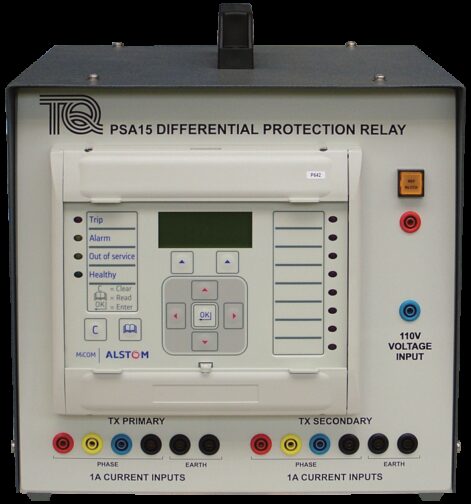Ancillary
PSA15
DIFFERENTIAL PROTECTION RELAY
A differential protection relay presented in an educational format to enable investigations into the protection of transformers, autotransformers, generators and other electrical apparatus with two windings.
If you have any questions or you'd like to discuss a product, please call us.
+44 1159 722 611DIFFERENTIAL PROTECTION RELAY
A numerical differential protection relay presented in an educational format. It connects to TecQuipment’s Protection and Relay Test Set (PSL50) and other modules in the Power System range. It allows investigations into protection of transformers, autotransformers, generators and other electrical apparatus with two windings.
The relay shows clearly the characteristics of three-phase differential protection. This includes high stability during ‘out-of-zone’ faults, zero-sequence current filtering for each winding, high-speed operation, magnetising inrush restraint, amplitude and vector matching.
The relay is housed in a robust enclosure with carrying handle. The unit mounts on the desk area of the Protection and Relay Test Set or other Power System product. It connects using a multi-core cable from the back of the relay to the Power System products.
A Micom P642 industrial relay forms the main part of the unit. The lecturer or student sets up different fault circuits on the Protection and Relay Test Set or other Power System product. They then use the keypad and display on the relay module to program it to the settings needed for the tests. They can also use the Micom S1 software (supplied) and a suitable computer (computer not included) to program the relay module. The user then connects the 4 mm shrouded sockets from the relay to the test circuits on the Power System product.
Most tests need only one relay. However, the Protection and Relay Test Set (PSL50) has two sockets to test two relay modules at the same time if needed.
The relay connects to the test circuits through the voltage and current transformers (VTs and CTs) built into the Power System products. This helps to show standard electrical engineering practice and the importance of CT ratio, connection and rating.


